Discover 35 hidden attractions, cool sights, and unusual things to do in Bielsko-Biała (Poland). Don't miss out on these must-see attractions: Zamek Sułkowskich, Cathedral of St. Nicholas, and Weaver's House Museum. Also, be sure to include Galeria BWA in your itinerary.
Below, you can find the list of the most amazing places you should visit in Bielsko-Biała (Silesian).
Table of Contents
Zamek Sułkowskich

Also known as: Muzeum Historyczne w Bielsku-Białej – Zamek książąt Sułkowskich
Castle museum focused on history and art. The Bielsko-Biała Museum, also known as the Castle of the Sułkowski Princes is a museum for the city of Bielsko-Biała, Poland located in the historical Bielsko Castle. Three local branches of the museum have been established since the 1970s: the Julian Fałat Museum, the Museum of Technology and Textile Industry, and the Weaver's House Museum.[1]
Address: Wzgórze 16, 43-300 Bielsko-Biała
Cathedral of St. Nicholas

Also known as: Katedra św. Mikołaja w Bielsku-Białej
Cathedral in Bielsko, Poland. The Saint Nicholas' Cathedral is the main Roman Catholic Church of the city of Bielsko-Biała, in the Silesian Voivodship, Poland.
It overlooks the market square (Rynek). Founded between 1443 and 1447, it was almost completely rebuilt at the beginning of the 20th century according to a design by Viennese architect Leopold Bauer. Another artist from Vienna, Rudolf Harflinger, designed the stained-glass windows. The city was in that time part of the Austro-Hungarian Empire, in the crownland Silesia.
In 1992, the church became the cathedral of the newly created dioceses of Bielsko and Żywiec.
The tower rises 61 meters above the city and is a landmark for the surrounding area.
The organ (III/51) is a work from Rieger-Kloss, built in 1915.[2]
Address: ul. Juliana Falata 34, 43-360 Bielsko-Biala
Weaver's House Museum
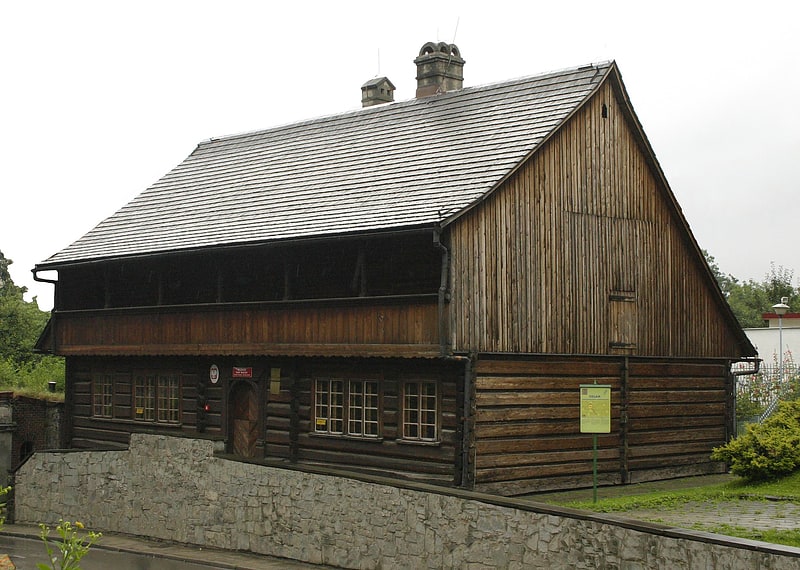
Also known as: Muzeum w Bielsku-Białej – Dom Tkacza
Museum in Bielsko, Poland. The Weaver’s House is a unique example of the 18th-century craftsman architecture. Located in Bielsko-Biała, it is situated in the Old Uptown in a log cabin with its characteristic hay store. The building is a museum branch belonging to the Museum in Bielsko-Biała.
The building functioned as a house and a workshop until the beginnings of the 20th century. The information about its tenants is incomplete. In the second half of the 18th century it certainly was the Bartke family’s and in the 19th century the Bathelts’. From 1873 the owner of the building was Carl Nowak and after his death - Marie, the widow. At the beginning of the 20th century it belonged to the local shoemaker, Antoni Polończyk After the World War II the building became a tenement house until Antoni’s son, Wiktor Polończyk, donated it to the Polish State in 1974 in order to establish a museum there. When in 1992 the long-lasting renovation works finished, the District Museum in Bielsko-Biała opened the exhibition to the public.[3]
Address: Jana III Sobieskiego 51, 43-300 Bielsko-Biała
Galeria BWA
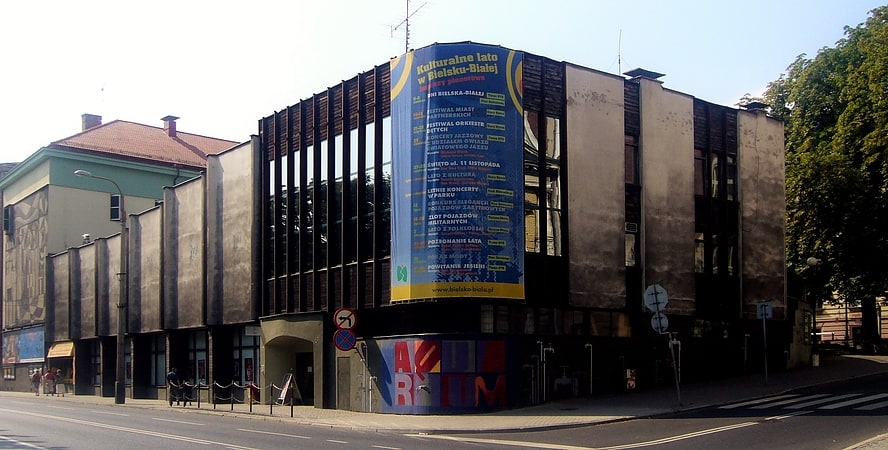
Also known as: Galeria Bielska BWA
Art gallery in Bielsko, Poland. The Galeria Bielska, located at 3 Maja 11, Bielsko-Biała, Poland, is one of the most important city galleries in Poland. It also is home to such portraits like Scream.[4]
Address: Ul. 3 Maja 11, Bielsko-Biała
Aleksandrowice
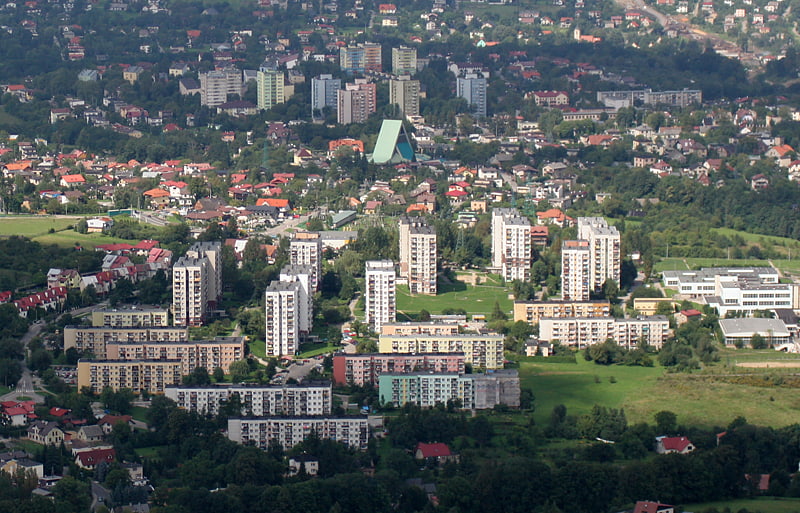
Aleksandrowice is an osiedle of Bielsko-Biała, Silesian Voivodeship, southern Poland. It is located in the central-west part of the city, in Silesian Foothills. The osiedle has an area of 1.6988 km2 and on December 31, 2006 had 1,821 inhabitants.[5]
Schronisko PTTK Szyndzielnia
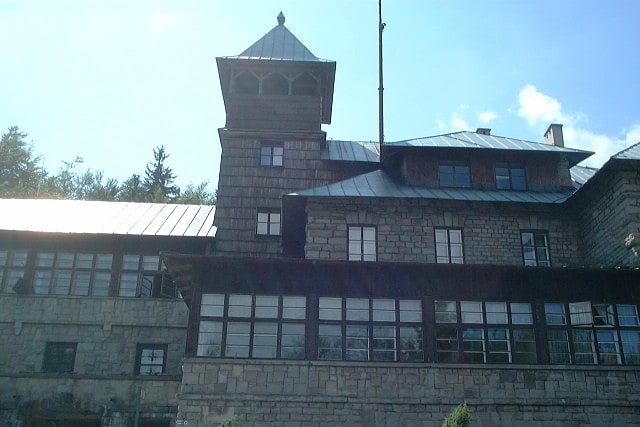
PTTK Szyndzielnia hostel - a mountain tourist hostel of the Polish Tourist Society in the Silesian Beskid Mountains, on Szyndzielnia, in the municipal forests of the city of Bielsko-Biała. Located at an altitude of 1001 m above sea level. The first brick hostel in this mountain range, put into operation in 1897.
Address: 8 Schronisko Szyndzielnia, Bielsko-Biała
Studio Filmów Rysunkowych
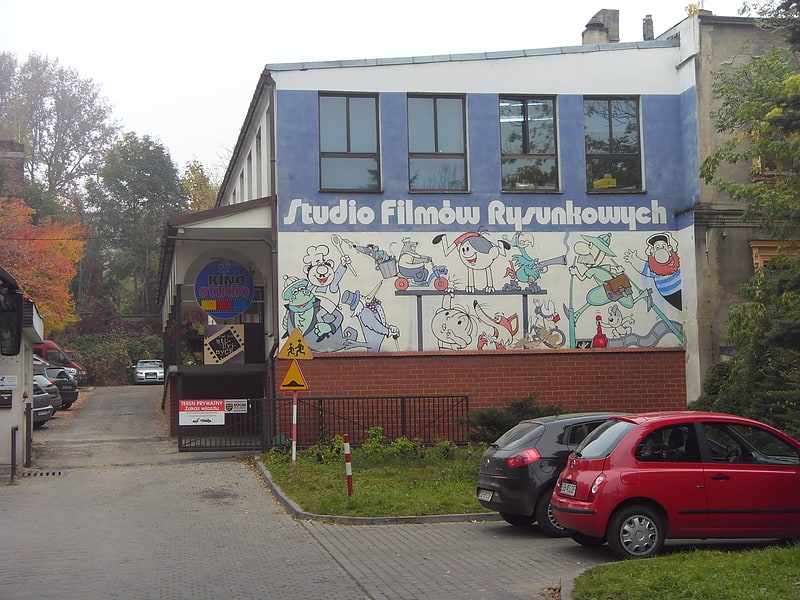
Studio Filmów Rysunkowych is a Polish animation studio based in Bielsko-Biała. It is best known for animating Polish cartoons of Bolek and Lolek, and Reksio.
It was founded in 1947 by brothers Zdzisław and Maciej Lachur with Władysław Nehrebecki, Leszek Lorek, Alfred Ledwig, Mieczysław Poznański, Aleksander Rohoziński, Wiktor Sakowicz, Rufin Struzik, and Wacław Wajser. The studio was established on 1 September 1947 as Eksperymentalne Studio Filmów Rysunkowych (Experimental Animated Film Studio) operating at the office of Trybuna Robotnicza (Worker's Tribune) newspaper. In 1948, the studio moved to Wisła, and then to Bielsko.[6]
Address: Cieszyńska 24, 43-303 Bielsko-Biała
Frog House
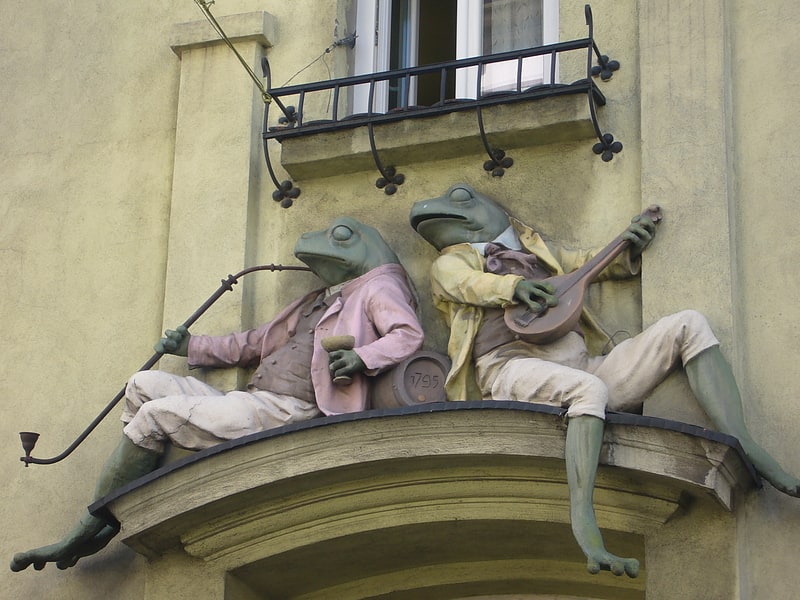
Also known as: Kamienica Pod Żabami w Bielsku-Białej
Tourist attraction in Bielsko, Poland. Frog House is an example of Art Nouveau architecture in the city of Bielsko-Biała, in southern Poland's Silesia Province. It features two frogs seated over the entrance, one smoking a pipe and the other playing a mandolin, while beetles roam freely over the walls.
The Frog House stands on Bielsko-Biała's Polish Army Square (plac Wojska Polskiego).[7]
Museum of Technology and Textile Industry
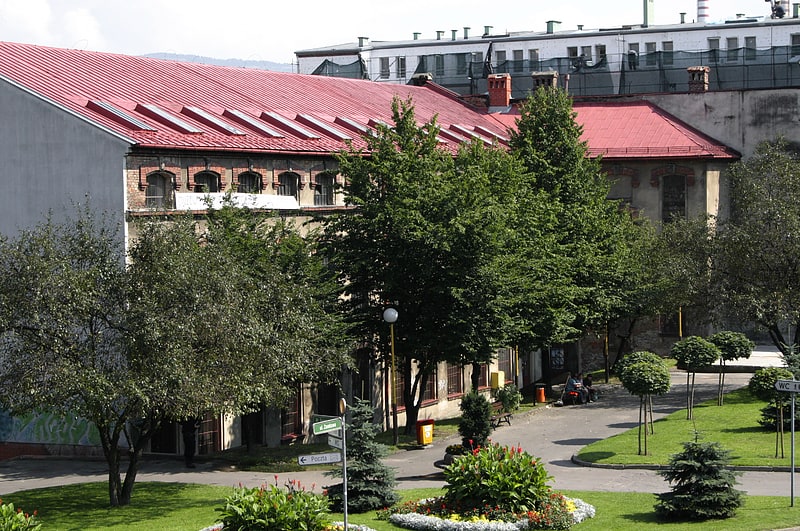
Also known as: Stara Fabryka - oddział Muzeum Historycznego w Bielsku-Białej
Museum. The Museum of Technology and Textile Industry - a branch of the Museum in Bielsko-Biała, Poland - was founded on January 1, 1979 with the aim of evidencing the traditions of the local wool industry centre by means of collecting machines, devices and documents related to this field of production. Apart from this the Museum also exhibits items connected with firefighting, printing and metal machine industry. The Museum occupies some parts of the Büttners’ former cloth factory, which used to be one of the biggest textile factories in Bielsko.[8]
Muzeum Motoryzacji

Museum of Motoring in Bielsko-Biała - a museum facility run by the Automobile Club of Beskid collecting vintage cars and motorcycles. It is located in Bielsko-Biała, at 1 Kazimierza Wielkiego Street.
The museum was established on November 11, 2006 on the initiative of Jacek Balicki, vice-president of the Beskid Automobile Club for antique vehicles, who became its director. The exhibits have been placed in adapted halls of a former fruit processing plant.
There are currently nine vehicles in the museum: 1982 Citroën 2CV 1938 Mercedes-Benz 170V sedan 1938 Mercedes-Benz 170V convertible b 1938 Mercedes-Benz W111 1964 Opel 1934 Opel Super 6 (training chassis) 1938 Siren 105 1982 Volvo P 210 Duett 1964 WFM M06 1960.
There are plans to continue expanding the exhibit.
The museum is open every Saturday between 11:00 a.m. and 4:00 p.m. Free donations are collected for tours, which go toward its upkeep.
Address: Kazimierza Wielkiego 1, 43-300 Bielsko-Biała
Jewish Cemetery

Jewish cemetery in Bielsko-Biala - an active Jewish cemetery located in Bielsko-Biala, in Aleksandrowice district, at 92 Cieszyńska Street.
In 1868-1931 it was supervised by the Funeral Brotherhood "Chewra Kadisza". Then till 1963 it belonged to the Jewish Religious Community and the Congregation of Mosaic Faith. Next, until 1972 it was owned by the State Treasury and then it became a communal cemetery, managed by the town. Since 1997 it belongs to the Jewish Community in Bielsko-Biala. During World War II it was severely damaged - over half of the matzevot were stolen or destroyed. In the 1960s some of the graves from the liquidated cemetery in Wyzwolenia St. were transferred there. Since 1983 the necropolis has had the status of a historical monument. In the 80's and 90's numerous renovation and cleaning works were carried out.
The area of the cemetery is 23 900 m² (2.39 ha). This area is divided into seven sectors, which in turn are divided into rows. There are about 1.2 thousand tombstones, while the number of all burial places is estimated at 3 thousand.
In the southern part of the cemetery there is a pre-burial house built in 1885 in Neo-Romanesque-Mauritanian style according to Karol Korn's project, which replaced an older house built in 1867. The most valuable elements of its furnishing are the ceiling polychromes, listed separately in the register of monuments.
Located near the center of town, the cemetery is also an enclave of wildlife. The most valuable element of the flora is the common ivy with numerous flowering varieties.
Burials are still taking place in the cemetery.
Stary Cmentarz Ewangelicki
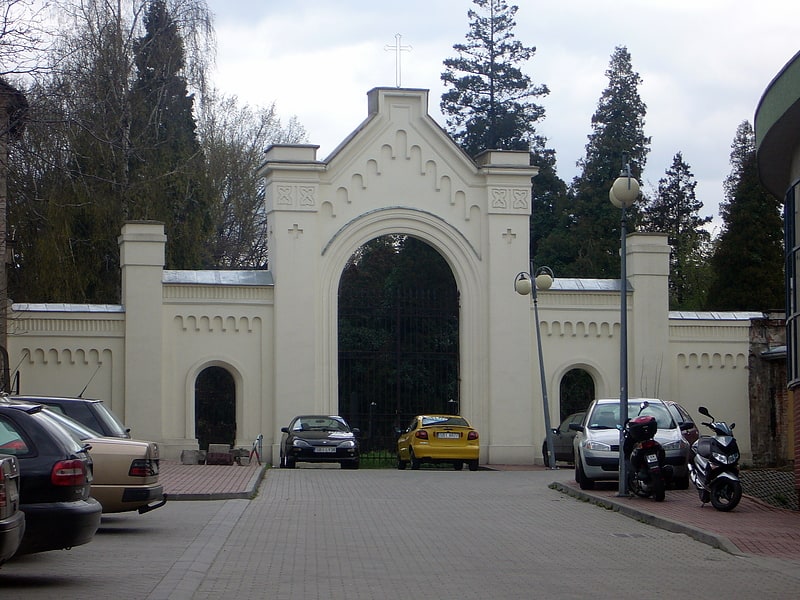
Old Evangelical Cemetery in Bielsko-Biała - a closed Evangelical cemetery located in Bielsko-Biała, at Andrzej Frycza-Modrzewskiego Street on the so-called Bielsko Zion.
It was established in February 1833 on a property donated by a soap maker Gottlieb Klimke. The decision to build it was speeded up by the cholera epidemic which hit Bielsko in 1831. Earlier both Evangelicals and Catholics were buried in a common cemetery by the Holy Trinity Church. In the 1860s it was significantly enlarged in the eastern direction. In 1911 New Evangelical Cemetery on Listopadowa St. was opened, however burials on the old cemetery were made until World War II. Probably later also victims of the Security Office were illegally buried here. After 1945, the cemetery was regularly destroyed and the communist authorities even demanded that German-language gravestones be removed. Descendants of the people buried in the cemetery had to devastate the tombstones in order to save them, for example, by painting them over with paint, removing old inscriptions, or turning the tombstones over with the inscriptions facing the ground. Few of them were restored by the town after 1989.
The cemetery consists of seven sectors. A neo-Gothic gate with three arcades, built in 1863, leads to the cemetery. The oldest preserved tombstone dates back to 1857. The most representative part of the necropolis is the Merit Avenue, leading from the south to the north, where the richest and most distinguished residents of the city found their resting place.
In the Old Evangelical Cemetery in Bielsko-Biała rest, among others, the mayors of the city, e.g. Karl Ferdinand Sennewaldt, Moritz Scholz or Heinrich Hofmann, distinguished pastors, e.g. Josef František Schimko, Karl Samuel Schneider, industrialists, e.g. Gustav Förster and Hermann Schneider, social activists, e.g. Theodor Sixt, scholars, e.g. Philipp Johann Ferdinand Schur
The necropolis, closed for over 70 years, is an enclave of wild nature in the center of the city. Monumental trees surrounded by ivy and other creepers grow here. Tombstones, walls and cemetery alleys are overgrown with numerous species of plants. It is also a haven for birds (especially during the breeding season) and small mammals.
Cmentarz ewangelicki
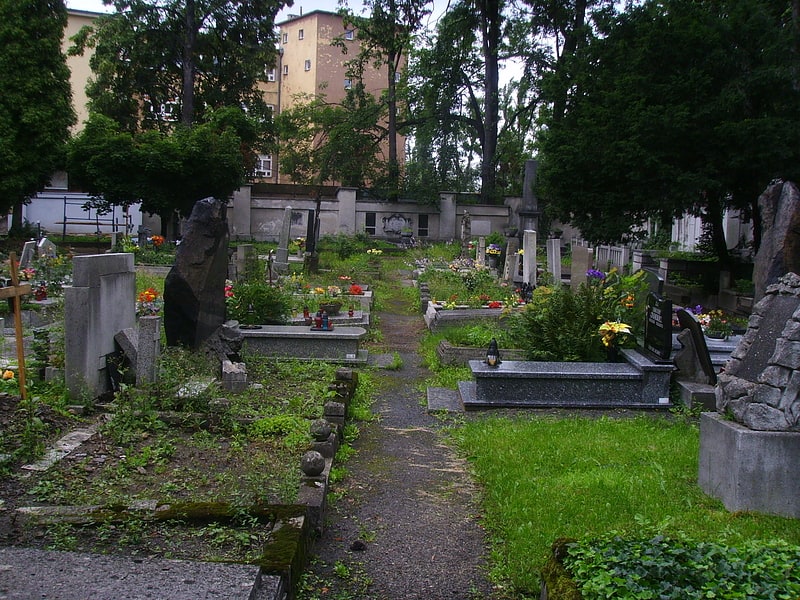
Evangelical cemetery in Bielsko-Biała at Piłsudskiego Street - an active evangelical cemetery located in the center of Bielsko-Biała, at 15 Piłsudskiego Street.
It was established in 1783, replacing a two-denominational (Catholic and Evangelical) necropolis that had existed probably since 1714 on the site of today's Martin Luther Church. In the 19th century, the cemetery was expanded twice (1838 and 1867). In 1945-1948, as part of the "struggle against Germanness," the cemetery was devastated, destroying 75% of the German-language inscriptions.
Among those buried there are representatives of large factory owners' families, pastors, mayors, politicians, artists - a significant part of the Bielsko elite of the 19th and early 20th centuries.
Address: Marszałka Józefa Piłsudskiego, Bielsko-Biała
Kościół pw. Przenajświętszej Trójcy
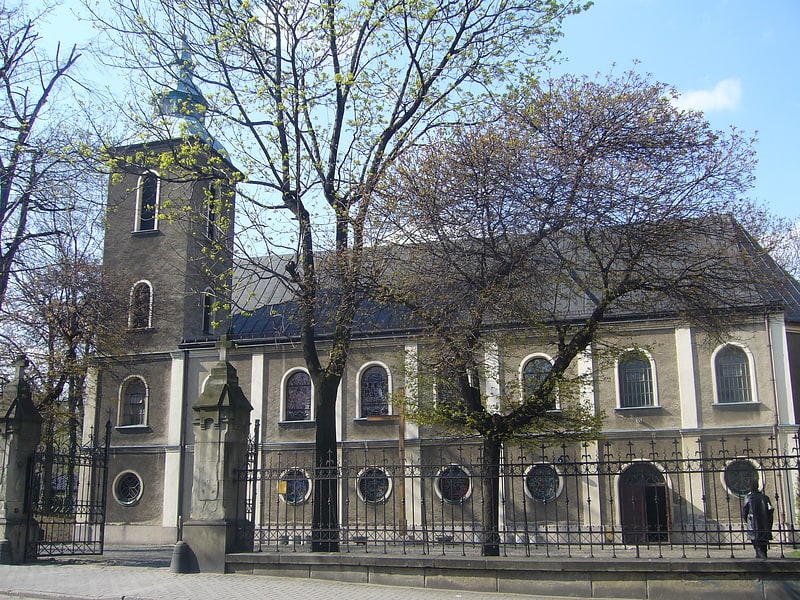
Holy Trinity Church in Bielsko-Biała - a historic Roman Catholic church in Bielsko-Biała, located in the Upper Suburb, at Sobieskiego Street. It is a parish church and belongs to the Bielsko-¯ywiec diocese (Decanate of Bielsko-Biała I - Centre. Until 2014 it served as a garrison church. It was built in the late Gothic style in the years 1604-1608 and was rebuilt several times.
Address: 10a Jana III Sobieskiego, Bielsko-Biała
Kościół pw. Opatrzności Bożej
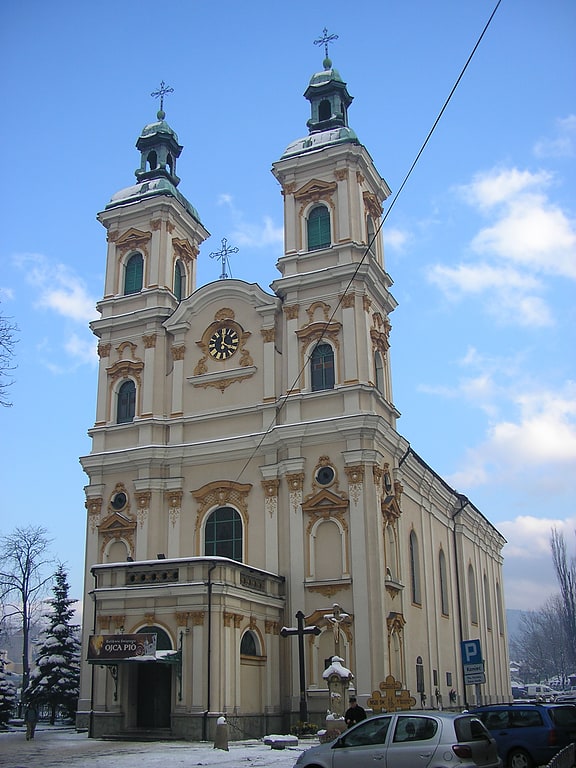
Divine Providence Church in Bielsko-Biała - a historic Catholic church in Bielsko-Biała, located in the Biała Krakowska district, at Divine Providence Square. It is a parish church and belongs to Bielsko-¯ywiec diocese. It was built in the late Baroque style in the years 1760-1769 and rebuilt twice in the 19th century.
Address: plac Opatrzności Bożej 19, 43-300 Bielsko-Biała
Teatr Lalek Banialuka
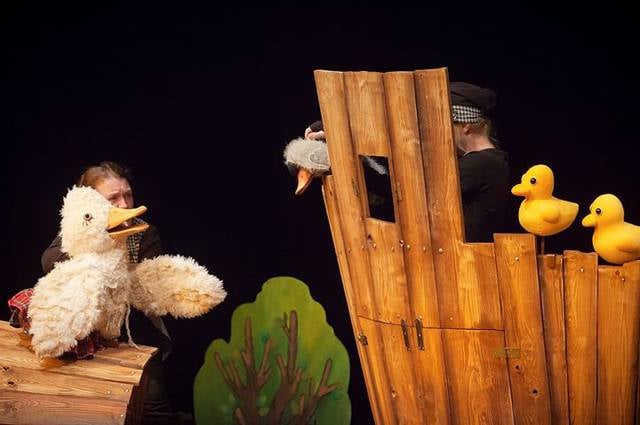
Concerts and shows, Theater
Address: Mickiewicza 20, 43-300 Bielsko-Biala
Szyndzielnia
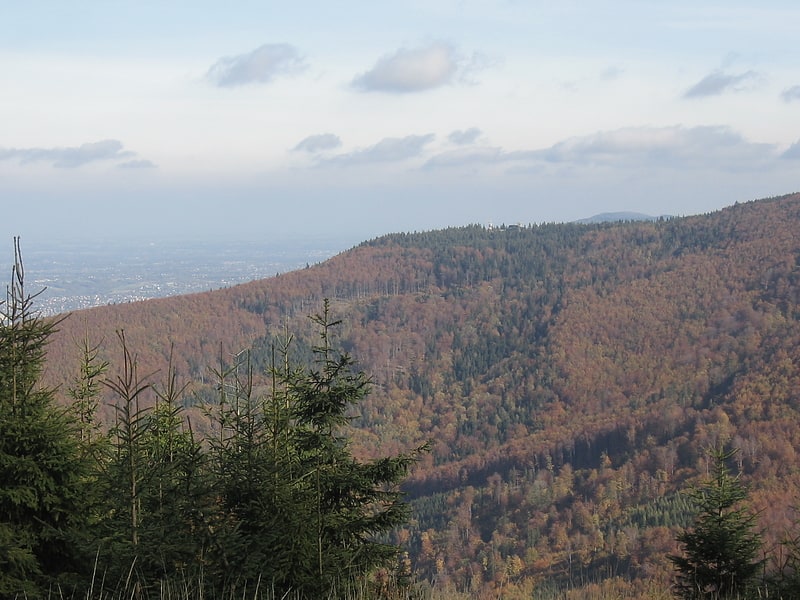
Szyndzielnia - a peak in Beskid Śląski, rising just north of Klimczok, located between the Olszówka, Wapienica and Białka valleys within the administrative boundaries of the city of Bielsko-Biała. Maps and guidebooks give the height of 1028, but the reason for this inaccuracy is the measurement point at the height of 1028.3, which however lies slightly below the summit.
The massif of Szyndzielnia is covered by beech forests with admixture of conifers - spruces and firs. On the slope of so called Mały Groń the position of larches. The ridge falling from the top of Szyndzielnia to the north, in the direction of Dębowiec, was once occupied by the Kamienicka Hall.
Szyndzielnia is located within the boundaries of the Beskid Śląski Landscape Park.
Kościół Zbawiciela
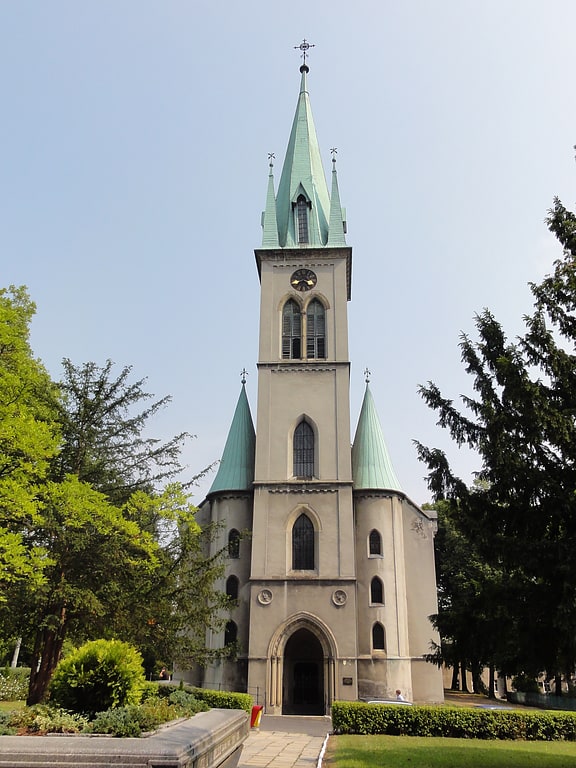
Church of the Savior in Bielsko-Biała - a historic Evangelical-Augsburg church located in Bielsko-Biała, on Martin Luther Square, in the central part of Bielsko Zion. It is a parish church of the Evangelical-Augsburg Parish of the Savior in Bielsko-Biala, as well as the bishop's church of the Cieszyn Diocese of the Evangelical-Augsburg Church. It does not bear the title of cathedral, which is not provided for in the service pragmatics of the Evangelical-Augsburg Church. The temple was built in 1782-1790, and its present neo-gothic shape comes from the reconstruction in 1881-1882.
Address: Plac Marcina Lutra, Bielsko-Biała
Evangelical Church
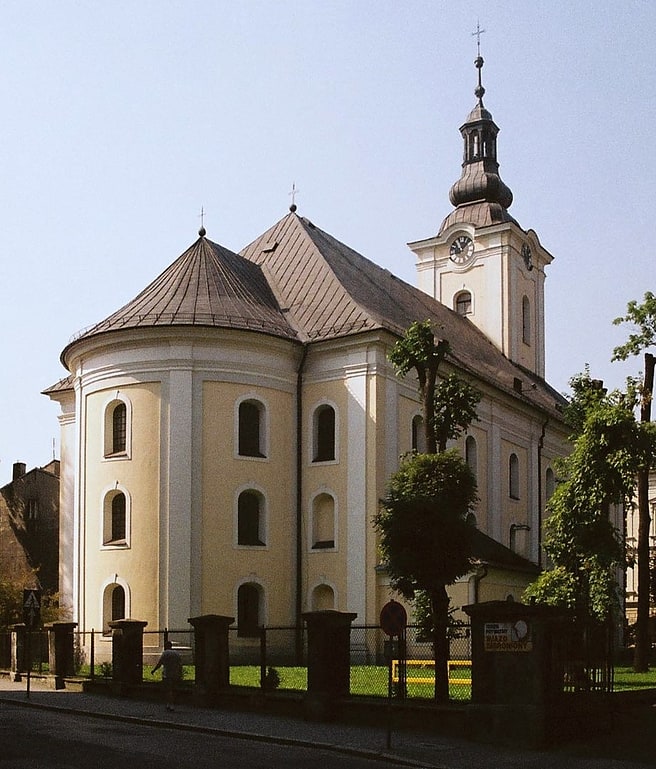
Dr. Martin Luther Church in Bielsko-Biała - a historic Evangelical-Augsburg church located in Bielsko-Biała, in the Biała Krakowska district, at Staszica Street. It is a parish church and belongs to Cieszyn diocese.
The Evangelical parish in Biala was established in 1782 after emperor Joseph II Habsburg issued a tolerance patent for evangelicals. The wooden church was built in place of the Evangelical cemetery that had existed from the beginning of the 18th century, which was replaced by a cemetery in Pilsudski Street.
A few months later construction of a new brick church began and was completed in 1788. It was built in classicist style according to plans of Breuning, a peripheral engineer from Myślenice, by Jan Feuerabend, a builder from Biala. It was the first protestant church in Galicia. From the beginning it had a tower with a bell, which was allowed in Galicia, but not in Austrian Silesia.
In the years 1832-1835 the interior was significantly rebuilt (among others, wooden choirs were replaced with two-storey, brick galleries, on which the vaults were supported). Most of the church's white, classicist furnishings, which have survived very well to the present day, date from this reconstruction.
The ornament of the temple is a wooden altar from 1835 made by a Cracow sculptor Joachim Kornecki. It is a portico supported by four Corinthian columns with huge figures of the four evangelists. The sculptures are made of wood so polished that they look like porcelain. At the top of the altar is the Eye of Divine Providence, and in the middle section is the painting "Jesus in the Garden", painted in 1837 by the Viennese painter Dornhäuser.
In 1848 a Classicist organ with movable figures and 1550 pipes ranging in size from 1 cm to 5 m, made by the Kuttler company in Opava, was installed in the church. It is a monument of European class.
Other historic elements of the church include a crystal chandelier from 1833, a pulpit from 1833 decorated with figures of fishermen pulling out a net, a baptismal font from 1817 and stuccowork in the main nave from 1832 by Jan Friedel from Opava.
In the vicinity of the church are: an Art Nouveau tenement house under the Frogs from 1905, a rectory building built by Jan Feuerabend in 1782 and thoroughly rebuilt in the 1870s in Classicist-Baroque style, a building of the Primary School No. 10 built in 1870 in Neo-Renaissance style by the Biala architect Emanuel Rost
Address: Stanisława Staszica, Bielsko-Biała
Ratusz w Bielsku-Białej
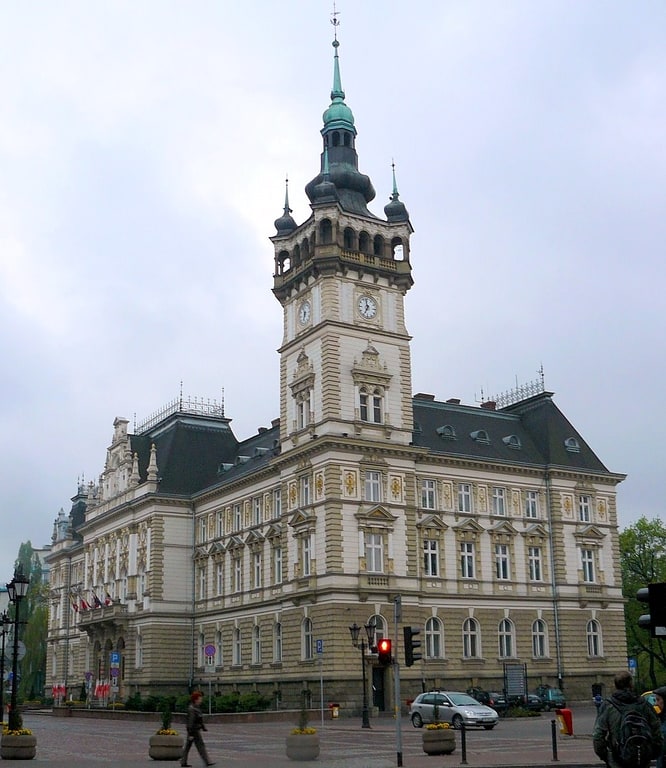
Bielsko-Biała Town Hall - a neo-Renaissance, historic town hall located at the Town Hall Square in Bielsko-Biała, in the Biała Krakowska district. It was built in the years 1895-1897 according to the project of Emanuel Rost junior. Originally it housed the magistrate of Biała, the Municipal Savings Bank and several other Biała institutions, as well as apartments for officials. Since 1951 it has been the seat of the President of the City, the City Council and some departments of the Bielsko-Biała City Hall.
Address: 1 Plac Ratuszowy, Bielsko-Biała
Bielskie Centrum Kultury - Dom Muzyki
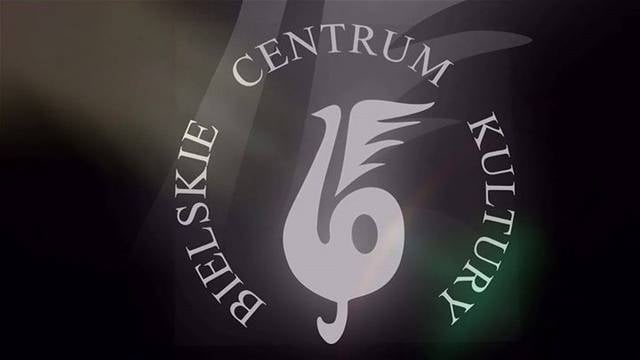
Museum, Art gallery
Address: Ul.Słowackiego 27, Bielsko-Biała
Klimczok
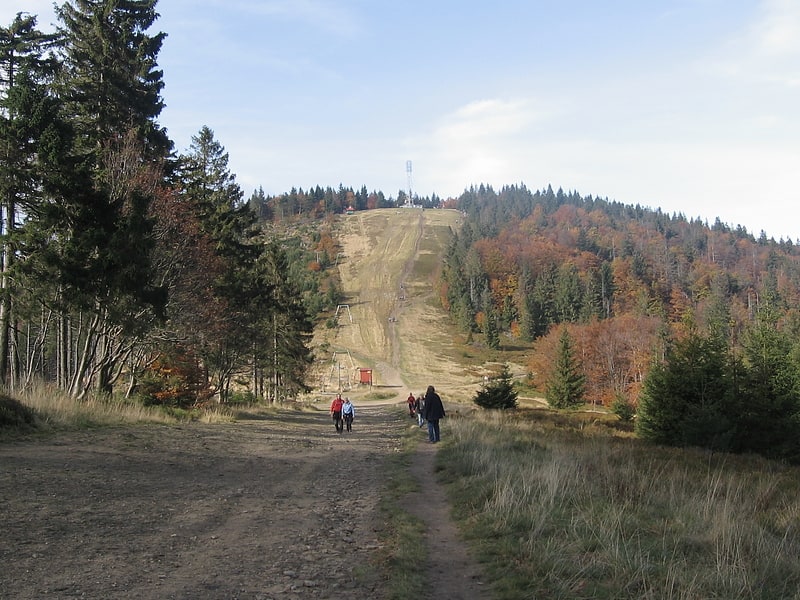
Klimczok, formerly also Klimczak - a mountain peak in the north-eastern part of the Barania Góra Range in Beskid Śląski. It is crossed by the administrative border of Bielsko-Biała and thus Klimczok peak is the highest point of the city. There is also a historical border between Silesia and Malopolska.
Kościół pw. Świętego Stanisława Biskupa i Męczennika w Bielsku-Białej
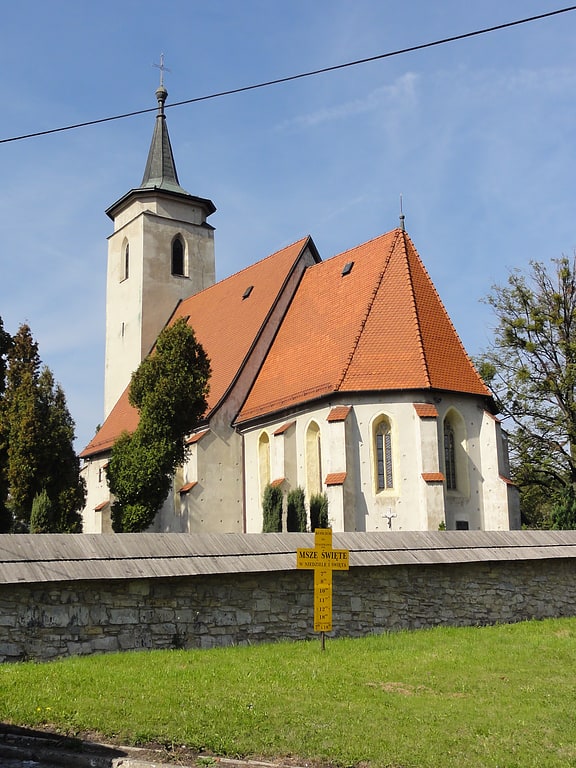
St. Stanislaus the Bishop and Martyr Church in Bielsko-Biała - a historic Catholic church in Bielsko-Biała, located in Stare Bielsko district, at St. Stanislaus Street. It is a parish church and belongs to Bielsko-¯ywiec diocese. It was built in Gothic style around 1380 and is the oldest sacral building in the city.
Address: 176A Jana III Sobieskiego, Bielsko-Biała
Dawny Hotel pod Orłem

Hotel Pod Orłem - a neo-Baroque-classical four-story edifice serving as an office building and shopping arcade, located on Wolności Square in Bielsko-Biała, in the center of historic Biała Krakowska.
It was built in 1905 according to the design by Alexander Neumann on the site of a former inn dating back to the times of delineation of the imperial route (the end of the 18th century) and was originally called Under the Black Eagle, referring to the two-headed black Habsburg eagle, although the eagle crowning the facade of the building is single-headed. The construction was financed by Jakub Gross, a factory owner of vodkas and liqueurs in Biala.
The façade of the building is covered with Neo-Baroque decorations in the form of Ionic pilasters, medallions with eagles, lions' mouths and vases, and the top is decorated with a stylized eagle and a pair of putti. Inside, the Art Nouveau décor of the vestibule and staircase with elevator has been preserved, as well as the Redoubt Room on the first floor, with an area of 709 m², in Neo-Renaissance style, with beautiful plafonds on the ceiling, cast iron arcades and balconies, and stucco decoration.
The hotel was famous, famous people stayed there, among others the last Austrian emperor Charles I Habsburg with his wife Zyta Burbon-Parmenska and Józef Piłsudski as the commander of the First Brigade of the Polish Legions. The hotel was the center of cultural and social life of Biala. It was the place where shows of the Biala Falcons, wrestling matches and Polish national events took place. Theatrical performances and balls of the Maritime and Colonial League were also organized there. In 1938, in the restaurant of Hotel Pod Orłem, Biala cab drivers captured a Silesian bandit Nikifor Maruszeczko.
In the 1990s, the hotel lost its former function and became an office building and an exclusive shopping arcade called Pod Orłem.
Address: 60 11 Listopada, Bielsko-Biała
Prokuratura Okręgowa
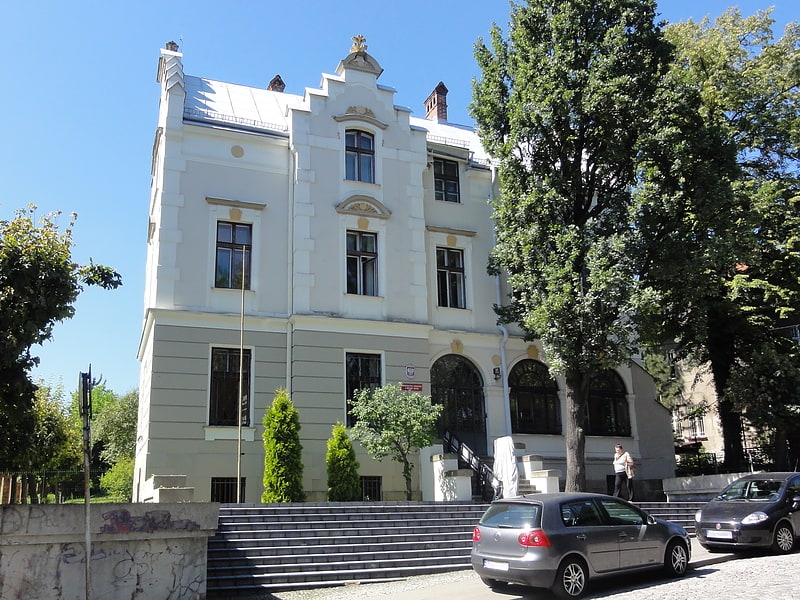
Address: 31 Listopadowa, Bielsko-Biała
Prokuratura Rejonowa
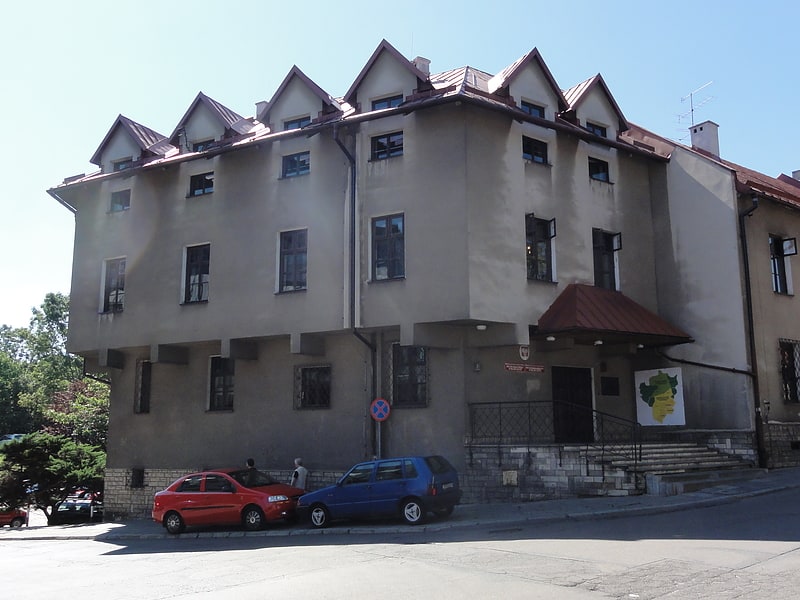
Address: 9 Jana III Sobieskiego, Bielsko-Biała
Bielsko
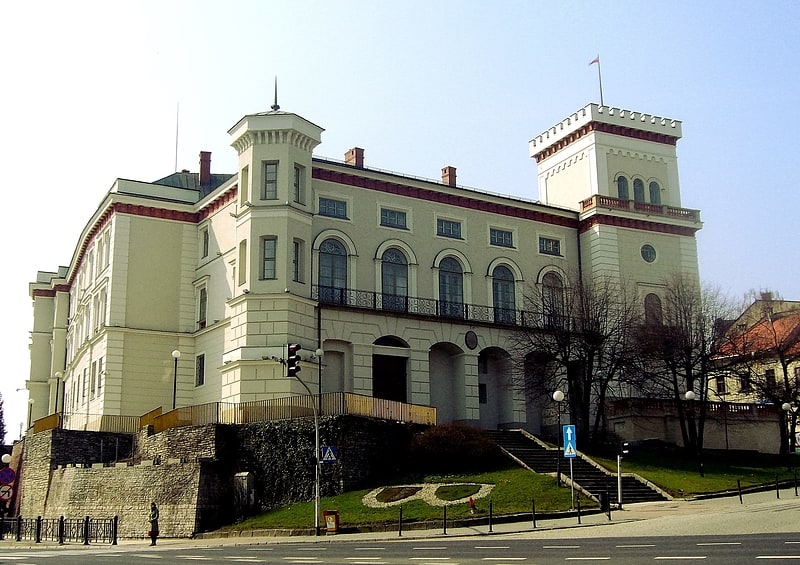
Town in Poland. Bielsko was until 1950 an independent town situated in Cieszyn Silesia, Poland. In 1951 it was joined with Biała Krakowska to form the new town of Bielsko-Biała. Bielsko constitutes the western part of that town.
Bielsko was founded by the Cieszyn Piast dukes in the late 13th century on the grounds of village later called Stare Bielsko (Old Bielsko), on the Biała River. It was first mentioned in a written document in 1312. Originally settled by Germans, it became the largest German-language center (Deutsche Sprachinsel Bielitz) in the Duchy of Teschen, and remained so until the end of World War II. In 1572 it gained autonomy as the Duchy (State) of Bielsko. During the 18th century a rapid development of textile industry occurred, and at the beginning of the 19th century more than 500 weavers worked in the town. After the 1920 division of Cieszyn Silesia between Poland and Czechoslovakia it became, despite the protests of local Germans, a part of Poland.
According to the Austrian census of 1910 the town had 18,568 inhabitants. The census asked people for their native language: 15,144 (84.3%) were German-speaking, 2,568 (14.3%) were Polish-speaking and 136 (0.7%) were Czech-speaking. Jews were not allowed to declare Yiddish, and most of them thus declared German as their native language. The most populous religious groups were Roman Catholics with 10,378 (55.9%), followed by Protestants with 4,955 (26.7%) and the Jews with 3,024 (16.3%). The vast majority of the Jews were exterminated by Nazis during World War II, and the German population was expelled by the Soviets after the war under the terms demanded by Stalin at the Potsdam Conference.
Three well-known Holocaust survivors from Bielsko are Kitty Hart-Moxon, Roman Frister and Gerda Weissmann Klein. All three have written autobiographies and other works about their experiences during the Second World War. The ancestors of the British peer Christopher Tugendhat, Baron Tugendhat, are also from what was Bielitz.[9]
Kościół pw. Narodzenia Najświętszej Maryi Panny w Bielsku-Białej

Church of the Nativity of the Blessed Virgin Mary and St. Valentine in Bielsko-Biała is a Roman Catholic parish church in Bielsko-Biała, Silesia. It belongs to Bielsko-Biala III - East deanery of Bielsko-¯ywiec diocese. It is located in the district of Lipnik, on Ks. Gen. Stanislaw Brzóski street.
Address: 3 Księdza Stanisława Brzóski, Bielsko-Biała
Dwór Lipnicki
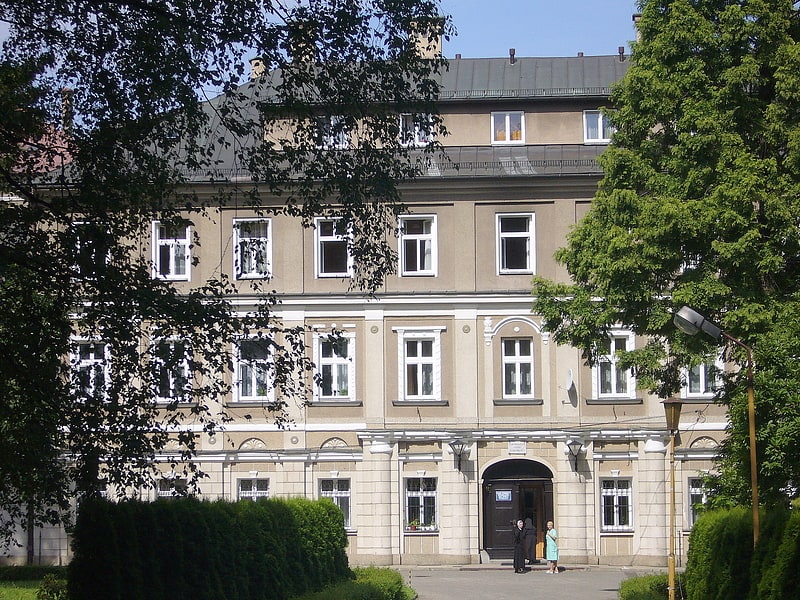
Lipnica Manor - a late classical palace located in the center of Bielsko-Biała, in the Biała Krakowska district, at Żywiecka Street. It was built in 1596 as a manor house of Lipnica's aldermen, however its present shape comes from the first half of the 19th century when it was owned by Albrecht Habsburg. Since 1885 it has belonged to the Congregation of the Daughters of Divine Love, serving as a monastery and a home for handicapped children and women. The palace is surrounded by a historic park, with which it forms a palace-park complex.
Address: 20 Żywiecka, Bielsko-Biała
Kamienica z XVII w.
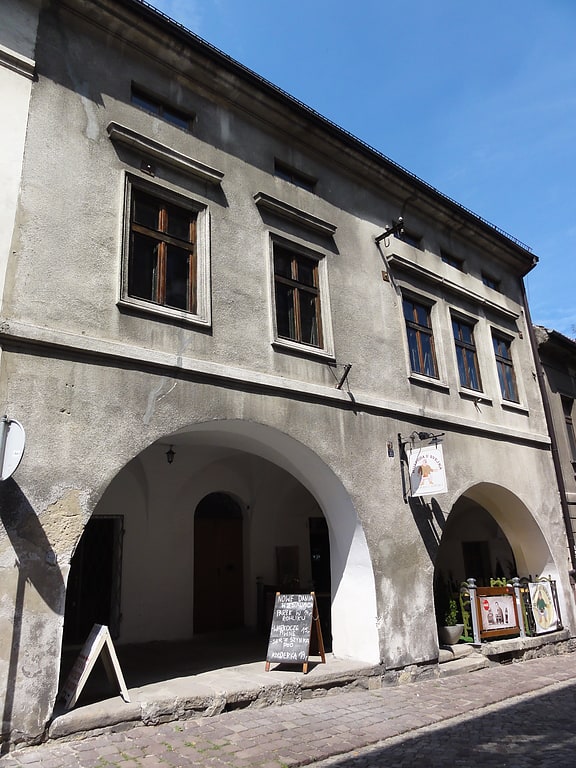
Address: 3 Podcienie, Bielsko-Biała
Kamienica z 1882 r.
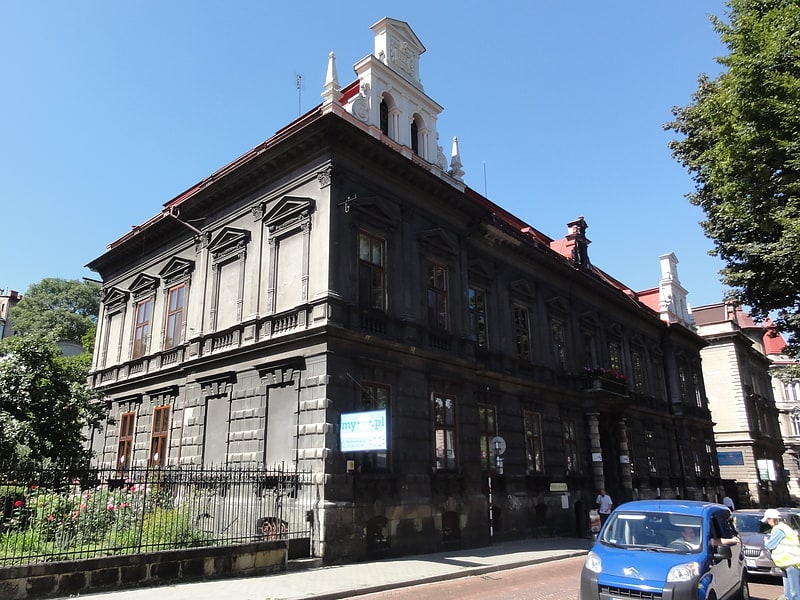
Address: 21 Adama Mickiewicza, Bielsko-Biała
Pałacyk z 1895 r.
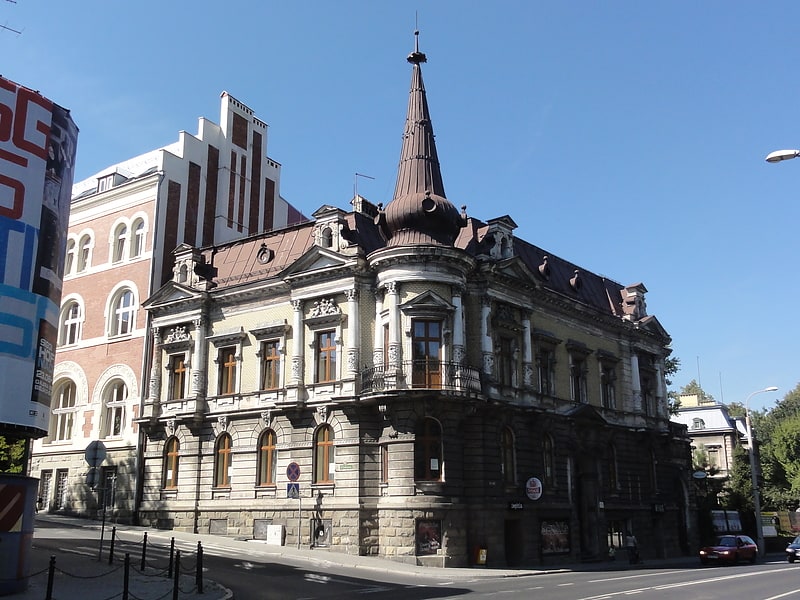
Address: 13 3 Maja, Bielsko-Biała
Kamienica z XIX w.

Address: 16 Plac Wojska Polskiego, Bielsko-Biała
Kamienica z XIX w.
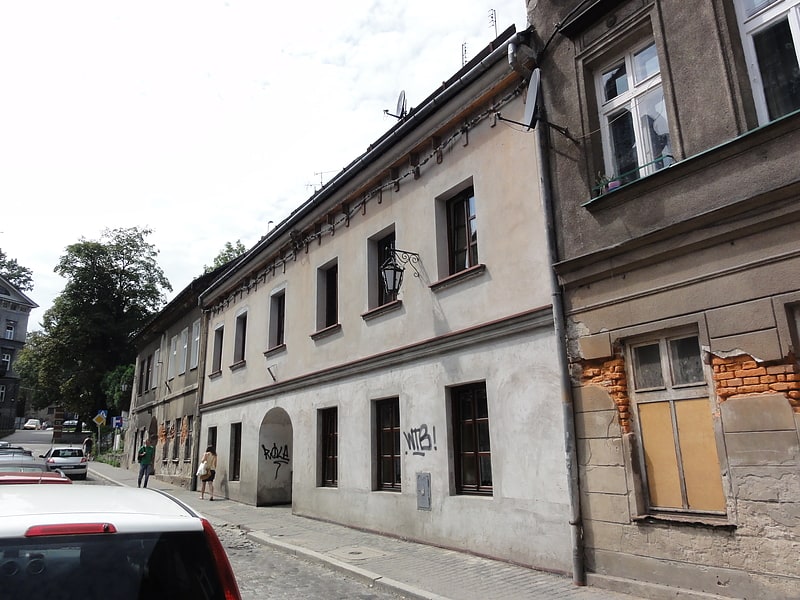
Address: 18 Władysława Orkana, Bielsko-Biała
Dawna szkoła katolicka

Address: 33 Księdza Stanisława Stojałowskiego, Bielsko-Biała